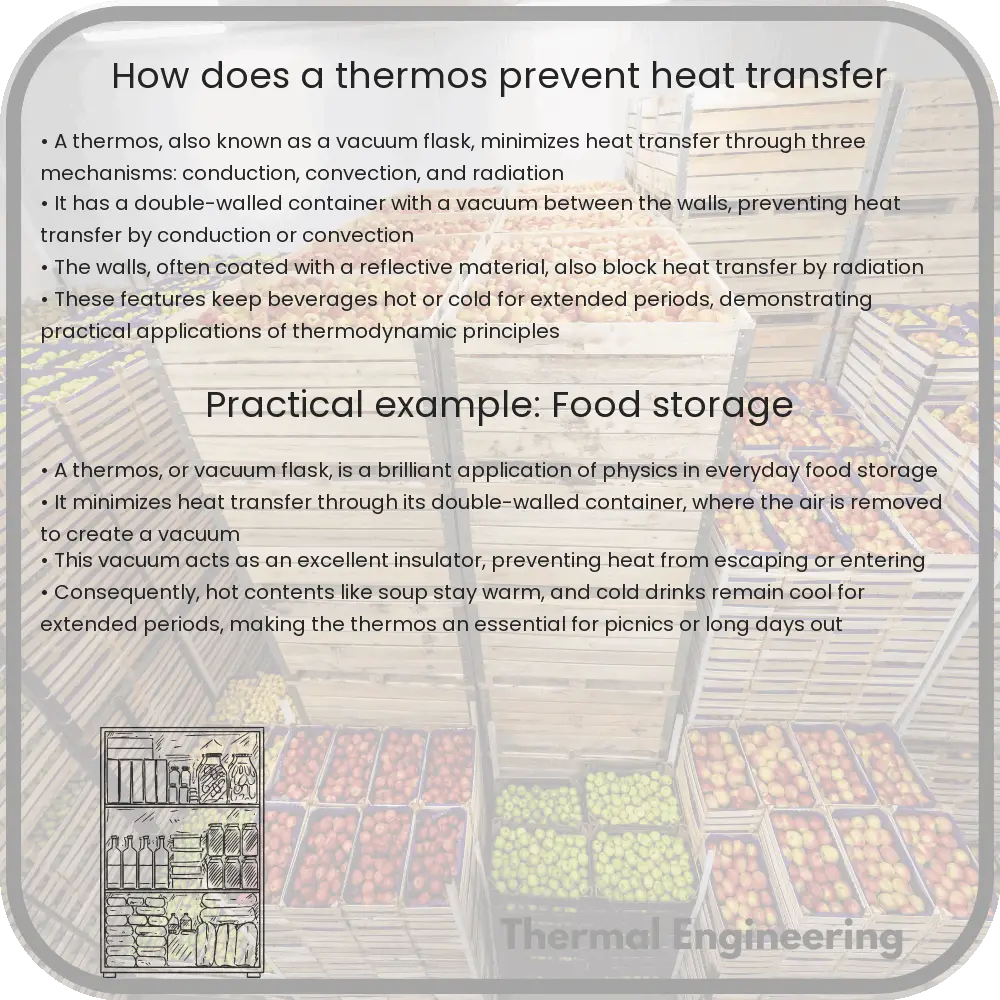Learn how a thermos, or vacuum flask, ingeniously maintains temperature through minimized heat transfer via conduction, convection, and radiation.

Understanding How a Thermos Works
A thermos, also known as a vacuum flask, is an ingeniously designed container that keeps its contents hotter or colder than its surroundings, effectively slowing down the rate of heat transfer. This article will explore the science behind how a thermos can maintain the temperature of liquids stored inside it, focusing on the engineering principles that prevent heat transfer.
Principles of Heat Transfer
Heat can be transferred in three primary ways: conduction, convection, and radiation. Understanding these mechanisms is essential to appreciating how a thermos works:
- Conduction is the transfer of heat through a material by direct contact.
- Convection involves the transfer of heat by the movement of fluids (liquids or gases).
- Radiation is the transfer of heat in the form of electromagnetic waves, such as visible light or infrared radiation.
The Design of a Thermos
The effectiveness of a thermos in maintaining the temperature of its contents comes from its specialized design that minimizes heat loss or gain by conduction, convection, and radiation. Here are the key components:
- Double-Walled Container: A thermos consists of two walls, typically made of glass or stainless steel, separated by a vacuum.
- Vacuum: The space between the two walls is evacuated of air, creating a vacuum. A vacuum is an excellent insulator because it lacks matter and therefore significantly reduces heat transfer by conduction or convection.
- Reflective Coating: The surfaces facing the vacuum are often coated with a reflective material, such as a thin layer of silver. This coating reflects heat radiation back towards its source, helping to prevent heat loss or gain through radiation.
- Sealed Lid: The lid of the thermos is tightly sealed to prevent the escape of heat by convection. It also minimizes the exchange of air between the inside of the thermos and the outside environment, further reducing heat transfer.
Overall Effectiveness
The combination of these design elements allows a thermos to effectively limit the three mechanisms of heat transfer. By reducing conduction through the use of a vacuum, limiting convection by sealing the lid tightly, and reflecting radiation with a metallic coating, a thermos can maintain the temperature of its contents far longer than a normal container could.
Applications
Thanks to their ability to control heat transfer efficiently, thermoses are widely used in everyday contexts where maintaining temperature is important. They are ideal for keeping hot drinks hot and cold drinks cold over extended periods, thus enhancing convenience and enjoyment. Furthermore, thermoses have scientific and medical applications where precise temperature control is crucial, such as transporting biological samples or pharmaceuticals.
In conclusion, the thermos is a masterful application of basic physical principles, specifically engineered to minimize heat transfer. This capability not only makes it invaluable in daily life but also in various industrial and scientific fields.